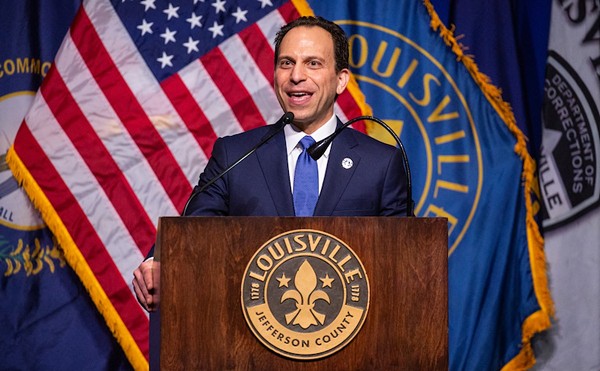Ark Reality
After reading “Dinos and cents” in the May 25 LEO Weekly, I’m wondering how “historically authentic” the designers of Ark Encounter intend to be. The biblical account of the flood and any retelling of the story in books or movies focus on the animals filing two by two into the ark and the eventual survival of Noah’s family and his floating zoo. Everything is sweetness and light. No mention is ever made of the horrific death and devastation caused by the flood. Will Ark Encounter display images of the bloated corpses of infants and children floating in the flood waters? Maybe a re-enactment of entire families clinging together in the rising water until they drown one by one? How about a wax replica scene of the vultures and other scavengers from the ark feasting on the remains of God’s victims after the waters recede? Since they’re throwing in the Tower of Babel, maybe they can include a section on Sodom and Gomorrah featuring the charred bodies of the babies burned alive in that charming little act of God’s “justice.” Ark Encounter won’t tell the whole story, it will present the usual antiseptic version that ignores the harsh reality of a global disaster.
Paul Riley, Shively
Get Real
As Anne Marshall recently reported in the May 18 LEO Weekly, the timing is bad for private and public investments in affordable housing for seniors and disabled people. Everyone knows that our economy is working its way through a financial crisis. We see priorities shifting back and forth every day as investors and government agencies re-allocate scarce funds.
To ardent free-marketers, supply-siders and Tea Partiers, the solution to our shortage of affordable housing would be obvious — privatize it. Just let the invisible hand of the market work it out. But, there’s a big problem with that theory in this particular case. As much as investors like to talk about market dynamics, they are usually unwilling to invest in affordable housing without government subsidies to lower their risks and boost their earnings. It’s a form of “leveraged investment.”
In the real world, private-public partnerships accomplish a lot of good things. They’re practical and they work. Let’s get real about our economic theories, too.
Tom Louderback, Highlands
Another Look
Now that Osama bin Laden is dead and the 10th anniversary of 9/11 draws near, perhaps we should re-examine the underlying causes of this disaster. First, there was a cabal of murderous planners plus a devout army of terrorists who exchanged their lives for an eternity in paradise with 72 virgins. But closer at hand — and much more dangerous — are the Einsteins in Washington who let anyone off the street take flying lessons, even if they declared no interest in learning how to land. These were the same wunderkinds who let travelers carry onboard the box cutters used to murder the crews of four airplanes. Now, hoping to glue the barn door shut after the horses are gone, security “experts” measure our liquid containers, break the files off of our nail clippers, and confiscate any solid object larger than a matchstick. (Oops! Scratch that — no matches allowed.) My favorite federal employee is the one who insisted a would-be boarder take a sip of her bottled breast milk to prove it wasn’t nitroglycerin.
A few questions to mull over while we contemplate our next terrorist attack: Who made the decisions mentioned above? What were their names and titles? Thanks to their splendid performances, did they get raises, annual bonuses or golden parachutes? Are any of them still in office, helping to make Americans safer? Why did we hire “leaders” whose IQs were demonstrably lower than those of bin Laden and his minions? Where can we find men and women smart enough to find their gluteus maximus with both hands?
John Gamel, Crescent Hill





